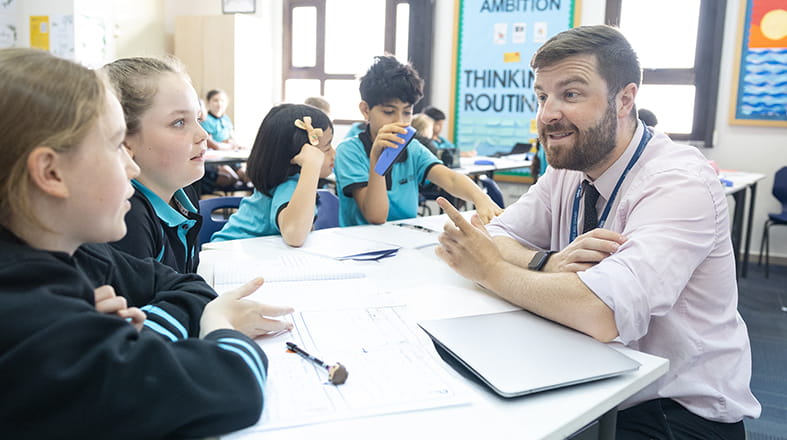We use cookies to improve your online experiences. To learn more and choose your cookies options, please refer to our cookie policy.

Collaboration isn’t just a classroom skill, it’s a future-ready mindset. In today’s world, success depends on creativity, communication, and connection. This article explores why collaboration matters for your child’s future and offers practical ways to nurture these skills at home.
At BIS Abu Dhabi, collaboration isn’t just about teamwork, it’s about learning how to think with others. Our Learner Ambition this half term is Collaborative, focusing on helping children build the skills they’ll need not just in school, but for life in the 21st century.
In a world where success depends on creativity, communication, and connection, collaboration gives children the tools to listen actively, build on others’ ideas, and explain their thinking clearly. These are skills that employers, universities, and communities value deeply, and they begin right here in our classrooms.
Collaboration develops more than group work; it shapes children into empathetic communicators and flexible problem solvers. Research shows that students who collaborate effectively:
Our goal is to nurture these habits early, so students grow into adults who can lead, listen, and learn in any environment.
To make collaboration purposeful, our teachers use Harvard Project Zero Thinking Routines, simple yet powerful structures that make thinking visible and collective. This half term, we’re focusing on three key routines:
Why it works:
It ensures every voice is heard and valued. Students learn that collaboration starts with thinking for themselves before building on others’ ideas.
Why it works:
It teaches children to extend ideas rather than just agree or disagree. This fosters deeper understanding and true co-construction of knowledge.
Steps:
Why it works:
It transforms observation into dialogue. Students listen, justify, and respectfully challenge each other’s reasoning, a hallmark of mature collaboration.
Using these routines at home helps children think together, listen carefully, and understand how ideas grow through dialogue.
When to use: Mealtimes, car journeys, or bedtime chats.
Example:
Why it helps: It slows conversation down, giving children time to think before speaking, a skill that builds confidence and clarity in communication.
When to use: During discussions, creative play, or planning family activities.
Example:
Why it helps: It teaches children that collaboration means adding value to others’ ideas, not just agreeing. It promotes flexible, constructive thinking.
When to use: Exploring a museum, reading a book, or noticing something unusual outside.
Example:
Why it helps: It models curiosity through reasoning and respectful challenge, “I see what you mean, but could it also be…?”, showing children how shared thinking builds understanding.
After family activities, try these quick prompts:
These reflections help children notice that teamwork isn’t just a classroom skill, it’s a mindset for life.
Collaboration extends far beyond school walls. It’s a vital skill for global citizens, from engineers working on sustainable technologies to doctors collaborating across continents.
In the UAE, collaboration is central to innovation: teams of scientists, architects, and educators work together to turn ambitious visions into reality. When children learn to collaborate, they’re learning to participate in that same spirit of teamwork and shared purpose.
By focusing on collaboration this term, we’re empowering our learners to grow as confident communicators and considerate teammates, children who don’t just share ideas but build on them. When collaboration becomes a habit of mind, it sets the foundation for lifelong learning, leadership, and success.

Aaron Regan
Year 5 Teacher, Curriculum Leader and Metacognition Lead